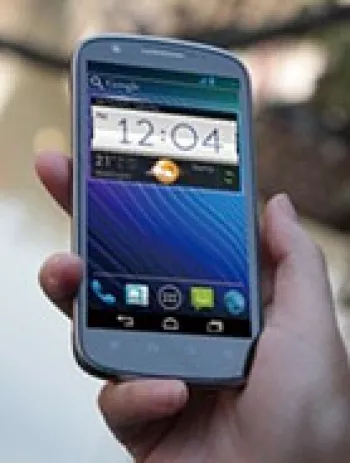
Overview of ZTE Speed
The ZTE Speed is a budget-friendly smartphone launched in December 2014, appealing primarily to users seeking basic functionality without the high cost associated with premium devices. Despite being discontinued, it remains a notable mention due to its affordability and essential features.
Network and Connectivity
The ZTE Speed supports GSM, HSPA, and LTE network technologies, making it versatile for users needing various network options. Connectivity features include 2G bands (GSM 850 / 900 / 1800 / 1900), 3G bands (HSDPA), and unspecified 4G bands capable of HSPA and LTE speeds. Additional connectivity options include GPRS and EDGE, providing users with reliable internet browsing capabilities when 3G or 4G networks are unavailable.
Launch and Availability
Announced and released in December 2014, the ZTE Speed was a cost-effective option in its time. Currently, it is discontinued, but its specifications offer insight into the entry-level smartphone market during that era.
Body and Design
The device is compact with dimensions of 134.6 x 66 x 10.2 mm, weighing 136.1 grams. It features a Micro-SIM slot and fits comfortably in hand, owing to its lightweight and manageable size. The design leans towards sleek and practical, aimed at users preferring utility over premium aesthetics.
Display
The ZTE Speed is equipped with a 4.5-inch TFT display offering a resolution of 540 x 960 pixels. This results in a pixel density of approximately 245 ppi, which provides adequate clarity for general usage. The display is suitable for basic viewing needs such as browsing and video playback.
Platform and Performance
Running on Android 4.4.2 KitKat, the ZTE Speed uses the Qualcomm MSM8916 Snapdragon 410 chipset, featuring a Quad-core 1.2 GHz Cortex-A53 CPU and an Adreno 306 GPU. While not designed for high-end gaming, the performance is sufficient for everyday tasks such as calls, messaging, and social media browsing.
Memory and Storage
The device comes with 8GB of internal storage complemented by 1GB of RAM. For users needing more storage, a dedicated microSDHC card slot is available, allowing expansion and flexibility in storing media and apps.
Camera Capabilities
Main Camera
The main camera on the ZTE Speed is a 5 MP shooter with autofocus, LED flash, and panorama and HDR features. Although modest, it suffices for basic photography needs, making it apt for casual photography and capturing everyday moments.
Selfie Camera
The selfie camera is a 2 MP unit, suitable for basic video calls and selfies. While it doesn't offer advanced photography features, it supports fundamental tasks where a front camera is required.
Sound and Extras
The ZTE Speed includes a loudspeaker and a 3.5mm audio jack, allowing easy connection to external audio devices. These features are pivotal for users who value accessibility in audio peripherals.
Communication Features
Connectivity options encompassing Wi-Fi 802.11 b/g/n and Bluetooth 4.0 with A2DP support ensure users maintain robust wireless connections. Despite the lack of NFC, the ZTE Speed provides GPS, FM radio, and microUSB 2.0, essential communication tools for conventional smartphone use.
Additional Features
Sensors on the device include an accelerometer and proximity sensor. These sensors contribute to the phone's basic functionality, like screen rotation and call management features.
Battery Life
The device is powered by a non-removable Li-Po 2000 mAh battery, supporting up to 14 hours of talk time over 3G networks. This capacity is conducive to daily phone usage without frequent charging disruptions.
Final Remarks
The ZTE Speed, available initially around 80 EUR, presents a budget-conscious phone option, emphasizing functionality over extravagance. With a focus on fundamental features, it catered to users seeking practicality at a minimal cost, making it a prudent option within its segment during its release.
ZTE Speed Key Features
- Supports GSM, HSPA, and LTE technologies for versatile network compatibility.
- Powered by Android 4.4.2 (KitKat) OS for a smooth user experience.
- Equipped with Qualcomm MSM8916 Snapdragon 410 chipset and Quad-core 1.2 GHz Cortex-A53 CPU for efficient performance.
- Includes a dedicated microSDHC card slot for expandable storage.
- Features a 5 MP main camera with autofocus, LED flash, panorama, and HDR capabilities.
- Provides a decent battery life with a Li-Po 2000 mAh battery offering up to 14 hours of talk time on 3G.
- Lightweight design with a weight of only 136.1 g (4.80 oz).
- Affordable pricing at approximately 80 EUR, making it budget-friendly.
- Comes with a 3.5mm jack and FM radio for diverse audio options.
- Supports Bluetooth 4.0 and GPS for better connectivity and navigation.
Disadvantages of ZTE Speed
- Older Android version (Android 4.4.2 KitKat), lacks newer features and security updates.
- Limited internal storage of 8GB which may not be sufficient for many users.
- Only 1GB of RAM which can result in slower performance and multitasking issues.
- Low-resolution display with 540 x 960 pixels, providing a less sharp viewing experience.
- Basic camera setup with a 5 MP main camera and 2 MP selfie camera, delivering modest photo quality.
- No NFC support for contactless payments or data transfers.
- Non-removable battery, making it inconvenient to replace the battery when it has deteriorated.
- Discontinued product, meaning limited support and updates from the manufacturer.

View Also
More Phones
All Rights Reserved +14266 Phones © Mobilawy 2025

























